Crop diversity is the variance in genetic and phenotypiccharacteristics of plants used in agriculture. Two components of this are the genetic diversity within each crop (within-crop diversity), and the number of species commonly grown (between-crop diversity); both components have generally declined as a global trend in the past 50 years.
Crop diversity loss threatens global food security, as the world's human population depends on a diminishing number of varieties of a diminishing number of crop species. Crops are increasingly grown in monoculture, meaning that if, as in the historic Irish Potato Famine, a single disease overcomes a variety's resistance, it may destroy an entire harvest, or as in the case of the 'Gros Michel' banana, may cause the commercial extinction of an entire variety.
Crop diversity is therefore necessary for crop health and food security. International organisations are working across the world to preserve crop diversity, using means such as seed banks.

Crop diversity: traditional mixed crop (polyculture) cultivation of cacao and banana, Trinidad, 1903
Crop Diversity and Biodiversity Loss
Crop diversity is an aspect of biodiversityimportant for food security. The loss of biodiversity is considered one of today’s most serious environmental concerns by the Food and Agriculture Organization.[1] If current trends persist, as many as half of all plant species could face extinction.[2] Among the many threatened species are wild relatives of our crops – the wild and weedy cousins of domesticated plants that possess valuable traits for crop breeding, such as pest and disease resistance.[3] Some 6% of wild relatives of cereal crops such as wheat, maize, rice, and sorghum are under threat, as are 18% of legumes (Fabaceae), the wild relatives of beans, peas and lentils, and 13% of species within the botanical family (Solanaceae) that includes potato, tomato, eggplant (aubergine), and peppers (Capsicum).[4] In 2016, 29% of wild relative plant species were completely missing from the world’s genebanks, with a further 24% represented by fewer than 10 samples. Over 70% of all crop wild relative species worldwide were in urgent need of further collecting to improve their representation in genebanks, and over 95% were insufficiently represented with regard to the full range of geographic and ecological variation in their native distributions. While the most critical priorities for further collecting were found in the Mediterranean and Near East, Western and Southern Europe, Southeast and East Asia, and South America, crop wild relatives insufficiently represented in genebanks are distributed across almost all countries worldwide.[3][5]
Crop Diversity in The Global Diet
Since 1961, human diets across the world have become more diverse in the consumption of major commodity staple crops, with a corollary decline in consumption of local or regionally important crops, and thus have become more homogeneous globally.[6] The differences between the foods eaten in different countries were reduced by 68% between 1961 and 2009. The modern "global standard"[6]diet contains an increasingly large percentage of a relatively small number of major staple commodity crops, which have increased substantially in the share of the total food energy (calories), protein, fat, and food weight that they provide to the world's human population, including wheat, rice, sugar, maize, soybean (by +284%[7]), palm oil (by +173%[7]), and sunflower (by +246%[7]). Whereas nations used to consume greater proportions of locally or regionally important crops, wheat has become a staple in over 97% of countries, with the other global staples showing similar dominance worldwide. Other crops have declined sharply over the same period, including rye, yam, sweet potato (by -45%[7]), cassava (by -38%[7]), coconut, sorghum (by -52%[7]) and millets (by -45%[7]).[6][7][8]
With-in Crop Diversity
Within-crop diversity can result from different growing conditions: a crop growing in nutrient-poor soil is likely to be shorter than a crop growing in more fertile soil. Availability of water, soil pH, and temperature similarly influence crop growth.[9]
In addition, diversity of a harvested plant can be the result of genetic differences: a crop may have genes conferring early maturity or disease resistance.[9] Such traits collectively determine a crop's overall characteristics and future potential. Diversity within a crop includes genetically-influenced attributes such as seed size, branching pattern, height, flower color, fruiting time, and flavor. Crops also vary in less obvious characteristics such as their response to heat, cold or drought, or their ability to resist specific diseases and pests. Traits useful to plant breeders can often be found in wild relatives of crop species.[4]

Useful within-field diversity (polyculture): companion planting of carrots and onions. The onion smell puts off carrot root fly, while the smell of carrots puts off onion fly.[10]
Modern plant breeders develop new crop varieties to meet specific conditions. A new variety might, for example, be higher yielding, more disease resistant and have a longer shelf life than the varieties from which it was bred. The practical use of crop diversity goes back to early agricultural methods of crop rotation and fallowfields, planting and harvesting one type of crop on a plot of land one year, and using a different crop the next; this takes advantage of differences in a plant's nutrient needs, but more importantly reduces the buildup of pathogens.[11]
Both farmers and scientists must continually draw on the irreplaceable resource of genetic diversity to ensure productive harvests, as genetic variability provides farmers with resilience to pests and diseases and allows scientists access to a more diverse genome than can be found in highly selected crops.[11] The breeding of monocultural crops steadily reduces genetic diversity as desirable traits are selected, and undesirable traits are removed. Farmers can increase within-crop diversity to some extent by planting mixtures of crop varieties; they can further increase in-field diversity by intercropping and companion planting.[12]
Ecological Effects
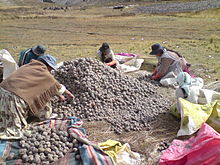
Biodiverse agroecosystem: traditional potato harvesting high in the Andes, Manco Kapac Province, Bolivia, 2012
Further information: Agroecology
Agricultural ecosystems function effectively as self-regulating systems provided they have sufficient biodiversity of plants and animals. Apart from producing food, fuel, and fibre, agroecosystem functions include recycling nutrients, maintaining soil fertility, regulating microclimate, regulating water flow, controlling pests, and detoxification of waste products.[12]
However, modern agriculture seriously reduces biodiversity, and it is traditional third world agriculture that is best at maintaining diversity with multiple cropping systems such as polyculture (including companion planting and intercropping) and agroforestry systems such as shifting cultivation. In Latin America, between 70% and 90% of beans are grown mixed with other crops such as maize and potatoes. Worldwide, multiple cropping provided up to 20% of all food in 1986. Traditional systems also maintain diversity within a crop species, as for instance in the Andesmountains where up to 50 varieties of potato are grown.[12]
The effects of loss of biodiversity are especially noticeable in pest control. Herbivorous pest insects tend to become more abundant in monocultures. Stable agroecosystems are biodiverse and contain sufficient numbers of natural enemies of crop pests, such as parasitoidal wasps able to control aphids and lepidopteran caterpillars. Such ecosystems continuously provide food and breeding sites for these beneficial species. Agroecosystems can achieve this by arranging a suitable combination of crops in space and time, given the type of soil and surrounding environment; sufficient abundance of non-crop plants in and around fields; and appropriate management of vegetation. Suitable farming strategies include polyculture, crop rotation, mosaics of small scattered fields and uncultivated land, perennial crops such as orchards (especially if a diverse floral undergrowth is permitted), tolerating specific weed species, and raising genetic diversity such as by planting mixtures of crop varieties.[12]
Crop genetic diversity can help to protect the environment. Crop varieties resistant to pests and diseases can reduce the need for application of harmful pesticides; more vigorous crop varieties can better compete with weeds,[13] reducing the need for applying herbicides as in the case study at Aarhus University in Denmark using more robust maize;[14] drought resistant plants can help save water and reduce the need for irrigation;[15] deeper rooting varieties can help stabilize soils; and varieties that are more efficient in their use of nutrients require less fertilizer.[16]
Economic Impacts
Agriculture is the economic foundation of most countries, and for developing countries a likely source of economic growth. Growth in agriculture can benefit the rural poor, though it does not always do so. Profits from crops can increase through such effects as higher value crops, better marketing, value-adding activities such as processing, or expanded access to markets.[17] Profits can also decrease through reduced demand or increased production. Crop diversity can protect against crop failure, and can also offer higher returns.[9][18]
Disease Threats

Loss of low-diversity crop to a single disease: the Irish Potato Famine, caused by the oomycete Phytophthora infestans. Starvation followed, as illustrated by James Mahony, 1847
One particular threat to mass-producing plants for harvest is their susceptibility to diseases. Wild species have a range of genetic variability that allows some individuals to survive should a disturbance occur. In agriculture, resistance through variability is compromised, since genetically uniform seeds are planted under uniform conditions. Monocultural agriculture thus causes low crop diversity, especially when the seeds are mass-produced or when plants (such as grafted fruit trees and banana plants) are cloned. A single pest or disease could threaten a whole crop due to this uniformity.[19] A well-known historic case was the Irish Potato Famine of 1845-1847, where a vital crop with low diversity was destroyed by a single fungus. Another example is when a disease caused by a fungus affected the monocultured 1970 US corn crop, causing a loss of over one billion dollars in production.[20]
A growing danger to present day agriculture is something called wheat rust: the name given from the reddish spores, it is a fungus that attaches to plants and breaks them down for food. A new form of the wheat disease - stem rust, strain Ug99 - has spread from Africa across to the Arabian Peninsula. This development was summarized on the January 16th 2007 by the international research centers Borlaug Global Rust Initiative and the Agricultural Research Service of the United States Department of Agriculture over 2 years of observation after its initial outbreak.[21] The Ug99 stem rust has recently proven to be even more virulent than other forms. Observations from field trials in Kenya showed that more than 85% of wheat samples, including cultivars from the major wheat producing regions in the world, have succumbed to the pest.[21] This is a serious pest alert for one of the major food crops of the world. The key to overcome the threat is genetic resistance found in certain wheat varieties. As Nobel laureate Norman Borlaug puts it: "We know what to do and how to do it. All we need are the financial resources, scientific cooperation and political will to contain this threat to world food security".[22]
Reports from Burundi and Angola warn of another looming food crisis partly caused by outbreaks of the African Cassava Mosaic Virus (ACMD).[23] Creating a "mosaic" of decay on the plants leaves, ACMD is responsible for the loss of a million tons of food each year. The Famine Early Warning Network of USAID reports from Angola that pockets of food insecurity exist in a number of districts partly due to the impacts of mosaic virus on the cassava crop. Likewise FAO (Food and Agriculture Organization of the United Nations) has warned about food insecurity in north and east central Burundi and one of the factors causing the precarious situation is declining yam harvests and the losses of cassava crops to the mosaic virus.[24] CMD also affects people already exposed to malnutrition and with limited coping mechanisms. CMD continues to be prevalent in all the main cassava-growing areas in the Great Lakes region of east Africa, causing between 20 and 90 percent crop losses in the Congo.[25] Breeders and relief agencies work together to fight the disease, and the FAO emergency relief and rehabilitation program is engaged in a project to assist vulnerable returnee populations in the African Great Lakes Region through mass propagation and distribution of CMD resistant or highly tolerant cassava planting materials.

Low-diversity crop variety destroyed: the 'Gros Michel' banana was commercially destroyed by Panama disease, caused by the fungus Fusarium oxysporum (illustrated).
A well known occurrence of disease susceptibility in crops lacking diversity concerns the 'Gros Michel', a seedless banana that saw world marketing in the 1940s. As the market demand became high for this particular cultivar, growers and farmers began to use the Gros Michel banana almost exclusively. Genetically, these bananas are clones, and because of this lack of genetic diversity, are all susceptible to a single fungus, Fusarium oxysporum(Panama disease); large areas of the crop were destroyed by the fungus in the 1950s.[26] 'Gros Michel' has been replaced by the current main banana on the market, the 'Cavendish', which in turn is (2015) at risk of total loss to a strain of the same fungus, 'Tropical Race 4'.[27]
Such threats can be countered by strategies such as planting multi-line cultivars and cultivar mixes, in the hope that some of the cultivars will be resistant to any individual outbreak of disease.[28]
Organizations and Technologies
The implications of crop diversity are at both local and world levels. Global organizations that aim to support diversity include International Plant Genetic Resources Institute (now known as Bioversity International), the International Institute of Tropical Agriculture, the Borlaug Global Rust Initiative, and the International Network for Improvement of Banana and Plantain. Members of the United Nations, at the World Summit on Sustainable Development 2002 at Johannesburg, said that crop diversity is in danger of being lost if measures are not taken.[1] One such step taken in the action against the loss of biodiversity among crops is gene banking. There are a number of organizations that enlist teams of local farmers to grow native varieties, particularly those that are threatened by extinction due to lack of modern-day use. There are also local, national and international efforts to preserve agricultural genetic resources through off-site methods such as seed and sperm banks for further research and crop breeding.
The Global Crop Diversity Trust is an independent international organisation which exists to ensure the conservation and availability of crop diversity for food security worldwide. It was established through a partnership between the United Nations Food and Agriculture Organisation (FAO) and the Consultative Group on International Agricultural Research (CGIAR) acting through Bioversity International.[29] The CGIAR is a consortium of International Agriculture Research Centers (IARC) and others that each conduct research on and preserve germplasm from a particular crop or animal species. The CGIAR holds one of the world's largest off site collections of plant genetic resources in trust for the world community. It contains over 500,000 accessions of more than 3,000 crop, forage, and agro-forestry species. The collection includes farmers' varieties and improved varieties and, in substantial measure, the wild species from which those varieties were created.[2] National germplasm storage centers include the U.S. Department of Agriculture's National Center for Genetic Resources Preservation, India's National Bureau of Animal Genetic Resources, the Taiwan Livestock Research Institute, and the Australian Network of Plant Genetic Resource Centers.[30][31][32][33]
The World Resources Institute (WRI) and the World Conservation Union (IUCN) are non-profit organizations that provide funding and other support to off site and on site conservation efforts. The wise use of crop genetic diversity in plant breeding and genetic modification can also contribute significantly to protecting the biodiversity in crops. Crop varieties can be genetically modified to resist specific pests and diseases. For example, a gene from the soil bacterium Bacillus thuringiensis (Bt) produces a natural insecticide toxin. Genes from Bt can be inserted into crop plants to make them capable of producing an insecticidal toxin and therefore a resistance to certain pests. Bt corn (maize) can however adversely affect non-target insects closely related to the target pest, as with the monarch butterfly.[34]
See Also
- List of environmental issues
- Conservation (ethic)
- Corporate farming
- Famine food
- Horizontal resistance provides flexibility in resistance to pathogens
- Landraces
- Small-scale agriculture
- Vavilovian mimicry
References
- ^ a b United Nations. World Summit on Sustainable Development. August 29, 2002
- ^ a b Associated Press. "Threat seen to half of Earth's plant species". The Milwaukee Journal Sentinel (Milwaukee, WI). November 1, 2002
- ^ a b Castañeda-Álvarez N.P.; Khoury C.K.; Achicanoy, H.A.; Bernau, V; Dempewolf, H.; Eastwood, R.J.; Guarino, L.; Harker, R.H.; Jarvis, A.; Maxted, N.; Mueller, J.V.; Ramírez-Villegas J, Sosa C.C.; Struik, P.C.; Vincent, H.; Toll, J. (2016). "Global conservation priorities for crop wild relatives". Nature Plants 2 (4): 16022. doi:10.1038/nplants.2016.22.
- ^ a b "Crop Wild Relatives Global Portal". Bioversity International.
- ^ Khoury, C.K.; Castañeda-Álvarez, N.P.; Dempewolf, H.; Eastwood, R.J.; Guarino, L.; Jarvis, A.; Struik, P.C. (2016). "Measuring the state of conservation of crop diversity: a baseline for marking progress toward biodiversity conservation and sustainable development goals". Crop Wild Relatives Policy Brief: 6.
- ^ a b c d Khoury, C.K.; Bjorkman, A.D.; Dempewolf, H.; Ramirez-Villegas, J.; Guarino, L.; Jarvis, A.; Rieseberg, L.H.; Struik, P.C. (2014). "Increasing homogeneity in global food supplies and the implications for food security". PNAS 111 (11): 4001–4006. doi:10.1073/pnas.1313490111.
- ^ a b c d e f g h Kinver, Mark. "Crop diversity decline 'threatens food security'". BBC. Retrieved 13 June 2016.
- ^ Fischetti, Mark. "Diets around the world are becoming more similar". Scientific American. p. 72. Retrieved 13 June 2016.
- ^ a b c Imbruce, Valerie (2007). "Bringing Southeast Asia to the Southeast United States: New forms of alternative agriculture in Homestead, Florida". Agriculture and Human Values24 (1): 41–59. doi:10.1007/s10460-006-9034-0.
- ^ "Companion Planting Guide". Thompson & Morgan. Retrieved 14 June 2016.
- ^ a b Jarvis, Devra I.; Camplain, Dindo M. (October 2004). Crop genetic diversity to reduce pests and diseases on-farm: Participatory diagnosis guidelines Version I. Technical Bulletin No. 12. Bioversity International.
- ^ a b c d Altieri, Miguel A. (1999). "The ecological role of biodiversity in agroecosystems" (PDF). Agriculture, Ecosystems and Environment 74: 19–31.
- ^ Kropff, M.J. "Project: Enhanced biodiversity and weed suppression in agro-ecosystems". Crop and Weed Ecology Group (WUR), METIS Wageningen University (2001-2005)
- ^ Melander, Bo. "Maize cropping with less herbicide". Integrated Weed Management, Case study 1. ENDURE, September 2008
- ^ Nautiyal, S; Kaechele, H. (2007). "Conservation of crop diversity for sustainable landscape development". Management of Environmental Quality 18 (5): 514–530.
- ^ Smith, Linda (2008). GMOs – A Crop Technology Whose Time Has Come. Fleishman and Hillard.
- ^ "Agriculture and Poverty Reduction". The World Bank. Retrieved 14 June 2016.
- ^ Smale, Melinda and King, Amanda (2005), "What is Diversity Worth to Farmers?"(PDF), Briefs (Bioversity International) 13: 1–5
- ^ Martinez-Castillo, J. (2008). "Genetic erosion and in situ conservation of Lima bean (Phaseolus lunatus L.) landraces in its Mesoamerican diversity center". Genetic Resources and Crop evolution 55 (7): 1065–1077.
- ^ Muir, Patricia. "Why does genetic diversity within and among crops matter?". Retrieved September 30, 2013.
- ^ a b "Crops". Environmental Literacy Council. 3 April 2008. Retrieved 21 June 2016.
- ^ "Dangerous rust puts strain on food security". Centre for Agriculture and Biosciences International. 17 January 2007. Retrieved 14 June 2016.
- ^ ICTVdB Management. "African cassava mosaic virus. In: ICTVdB - The Universal Virus Database", version 4. Büchen-Osmond, C. (Ed), Columbia University, New York, USA 2006
- ^ FAOSTAT. Video on Agriculture Activities in Developing Nations. www.faostat.fao.org/site/591/default.aspx
- ^ IRIN "CONGO: Disease devastates cassava crop, threatens widespread hunger". Integrated Regional Information Networks, Nairobi, Kenya. November 13, 2008
- ^ "Panama Disease: An Old Nemesis Rears Its Ugly Head Part 1: The Beginnings of the Banana Export Trades". apsnet.org.
- ^ Tola, Elisabetta (21 January 2015). "Banana variety risks wipeout from deadly fungus wilt". The Guardian. Retrieved 14 June 2016.
- ^ Broad, Shane (May 2007). Vegetable Production Systems Using Crop Diversification Strategies (PDF). University of Tasmania (PhD Thesis). p. 18.
- ^ "The Crop Trust". The Crop Trust. Retrieved 14 June 2016.
- ^ U.S. Department of Agriculture's National Center for Genetic Resources Preservation. http://www.ars.usda.gov/main/site_main.htm?modecode=54-02-05-00
- ^ India's National Bureau of Animal Genetic Resources
- ^ Taiwan Livestock Research Institute, Xinhua, Tainan
- ^ Australian Network of Plant Genetic Resource Centres
- ^ Peirs, F.B. "Bt Corn: Health and the Environment". Extension entomologist and professor, bioagricultural sciences and pest management. 6/02. Reviewed 4/07. Colorado State University http://www.ext.colostate.edu/PUBS/CROPS/00707.html
Further Reading
- Collins, Wanda W.; Qualset, Calvin O., eds. (1998). Biodiversity in Agroecosystems. CRC Press. ISBN 978-1-56670-290-4.
External Links
- Diverseeds videos on crop diversity
- Diverseeds documentary film on the global importance of plant genetic resources for food security
- Seeds of Survival, a project of USC Canada
- One seed at a time, protecting the future of food TED talk
Wikipedia





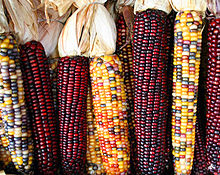
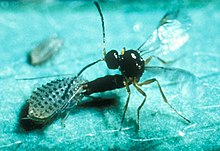
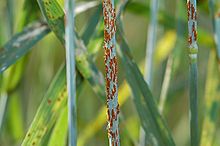
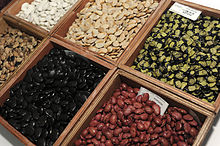
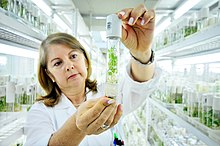





No comments:
Post a Comment